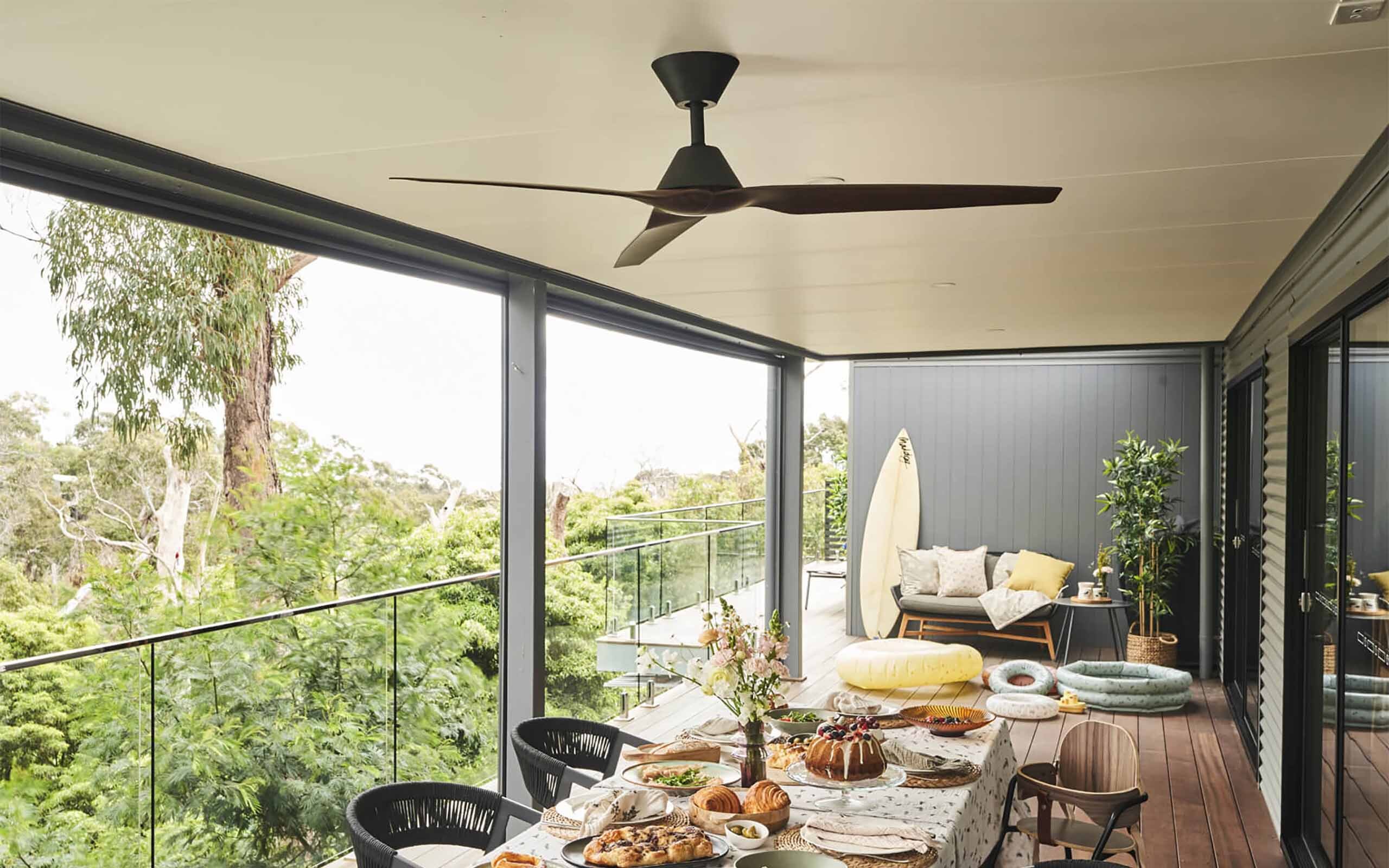Australia is a country known for its dramatic climate extremes—from searing summer heatwaves to humid coastal afternoons and dry desert winds. In such an environment, managing indoor temperatures efficiently is essential for comfort, productivity, and health. While many households have turned to air conditioners to escape the heat, a quiet and consistent contender continues to prove its worth across every corner of the country: the ceiling fan. No longer just a relic of the past, ceiling fans in Australia have undergone a technological and stylistic renaissance, offering an eco-friendly, stylish, and economical cooling option for modern homes and businesses alike.
What sets ceiling fans apart is their simplicity and versatility. They can be installed in nearly any room or outdoor area, complement a variety of design styles, and operate at a fraction of the cost of other cooling systems. More importantly, they work with the natural airflow of your space rather than against it, creating a pleasant, refreshing breeze without the energy-intensive processes associated with traditional air conditioning units. In a world increasingly conscious of sustainability and energy use, ceiling fans have become not just a practical solution, but a responsible one.
A Cooling Method That Works with Nature
Unlike air conditioners that artificially cool and dry out the air, ceiling fans harness a natural principle—airflow. When a fan rotates, it moves air downward, creating a wind-chill effect that helps the body feel cooler through increased evaporation of perspiration. This doesn’t actually lower the air temperature, but it does lower the temperature you feel, which is often what truly matters in hot weather. The sensation is immediate and comfortable, and best of all, it requires only a small amount of energy.
This principle is especially effective in the Australian climate, where many regions experience dry heat that can be efficiently managed with moving air. Even in more humid areas like coastal Queensland or northern New South Wales, ceiling fans provide constant air movement that prevents stagnant conditions and helps regulate comfort. In contrast to air conditioning systems that require sealed rooms and closed windows, ceiling fans encourage a connection with the outdoors—open windows, cross-ventilation, and fresh air—all while maintaining a breezy interior.
The Energy Efficiency Advantage
One of the biggest reasons ceiling fans continue to thrive in Australia is their exceptional energy efficiency. Operating a ceiling fan costs just a few cents per hour, in stark contrast to the much higher costs associated with air conditioning. In the long run, this translates into real savings on energy bills, particularly in households where fans are used as the primary cooling method or in combination with an air conditioner set to a higher temperature. The reduced reliance on refrigerant-based cooling also lessens strain on the power grid during peak summer demand and supports a more sustainable energy footprint.
As more Australian homes invest in solar energy systems, ceiling fans become an even more attractive choice. Because they draw so little power, they can often be run entirely on solar power during daylight hours. This enables households to enjoy cooling comfort without dipping into stored energy or pulling from the grid. Fans with LED lighting add another layer of efficiency, providing cost-effective illumination that suits bedrooms, living rooms, and outdoor areas alike.
Indoor and Outdoor Versatility
Ceiling fans are not restricted to indoor use alone. In Australia’s climate, where outdoor living is a cultural mainstay, ceiling fans help transform patios, verandas, and balconies into usable spaces year-round. Outdoor-rated ceiling fans are specifically designed to withstand exposure to the elements, including moisture, UV rays, salt air, and dust. These fans are ideal for alfresco dining areas, outdoor kitchens, pergolas, or backyard lounges. They help circulate air on still summer evenings, keep insects at bay, and make outdoor entertaining far more comfortable.
For the interior, ceiling fans are available in an incredible variety of styles, finishes, and sizes to suit every space. Large open-plan living areas benefit from fans with broader blade spans, while smaller bedrooms or studies work well with compact models that offer whisper-quiet performance. High ceilings may require extended downrods for optimal airflow, while low ceilings might call for flush-mounted fans that sit close to the surface. Whatever the space, there’s a fan configuration that fits both aesthetically and functionally.
Design That Keeps Up with Style Trends
Ceiling fans have come a long way from their purely utilitarian origins. Today’s fans are available in finishes that align with every interior style—from coastal whitewashed blades and warm timber textures to ultra-modern matte black and brushed aluminium. Sleek blade profiles and minimalist motor housings allow the fan to either blend into the background or stand out as a design feature. In contemporary homes, designers are now intentionally selecting ceiling fans as part of the visual composition of a room, not just for their cooling capability.
In many cases, ceiling fans now include integrated LED lighting, offering a 2-in-1 solution that simplifies ceiling fixtures while improving room aesthetics. These lights often come with dimming options, adjustable color temperatures, and remote control convenience. This makes them a popular choice in bedrooms, living rooms, and dining areas where lighting mood and functionality are equally important.
The Rise of Smart Ceiling Fans
Australia’s growing adoption of smart home technology has opened the door for a new generation of ceiling fans with enhanced functionality. Smart fans can be connected to home automation systems and controlled through voice assistants, smartphones, or tablets. Users can adjust fan speeds, set timers, change light settings, or program schedules without needing a wall switch. Some models even come equipped with motion sensors, temperature sensors, and the ability to integrate with weather forecasts to optimise performance.
These intelligent features not only enhance user experience but also improve energy efficiency by ensuring fans only run when needed and at the most appropriate speed. For busy households or multi-zone living environments, this level of control adds unmatched convenience and savings. As demand for connected living continues to rise, smart ceiling fans are fast becoming a standard feature in new homes and renovations alike.
Installation Requirements and Safety in Australia
In Australia, ceiling fan installation must be carried out by a licensed electrician to comply with national safety standards. This ensures that all electrical connections are secure, the ceiling structure is capable of supporting the fan’s weight and motion, and the wiring is compatible with household systems. Attempting to install a ceiling fan without professional help can not only void the product warranty but also pose serious safety risks.
Before installation, it’s important to assess the room’s layout, ceiling height, and mounting options. Some ceilings, particularly in older or double-storey homes, may require reinforcement or alternative mounts to ensure the fan is installed safely and efficiently. In apartments or townhouses managed by a body corporate, installation may also require written approval, particularly if structural changes or external fittings are involved.
A Sustainable Solution for Every Season
Ceiling fans are not just a summer solution—they also play a valuable role in winter. Most modern fans come with a reverse switch that allows the blades to spin clockwise, gently pushing warm air that has risen to the ceiling back down into the room. This helps maintain an even temperature and reduces the need for continuous heating. It’s a simple adjustment that makes a noticeable difference in comfort while keeping heating costs under control.
This year-round usefulness gives ceiling fans an advantage over many other appliances that serve only a single seasonal purpose. For households focused on reducing their carbon footprint, this dual-function efficiency reinforces the value of choosing ceiling fans over or alongside other heating and cooling systems.
Accessibility and Trusted Australian Retailers
Australians have access to a wide range of ceiling fan options thanks to a strong network of national retailers, online platforms, and specialist lighting stores. Retailers such as Beacon Lighting, Bunnings Warehouse, The Good Guys, and regional lighting showrooms carry a broad selection of models from trusted brands like Hunter Pacific, Martec, Fanco, Mercator, and Eglo. These brands are known for producing high-performance fans designed to handle the demands of the Australian climate.
Online stores also offer direct-to-door convenience, often with additional configuration tools, comparison guides, and customer reviews to help shoppers choose the right fan for their home. Many retailers provide installation services or partner with electricians to deliver a seamless end-to-end experience, from purchase to setup.
Smart Cooling for the Modern Australian Lifestyle
Ceiling fans offer an ideal balance between comfort, sustainability, and affordability. As Australian homes continue to evolve in both style and functionality, ceiling fans are keeping pace with innovations in technology, energy efficiency, and design. They are adaptable to every type of space, suitable for all climates, and able to provide cooling relief without the heavy costs of traditional air conditioning.
For homeowners looking to create breezy, efficient, and stylish interiors, the ceiling fan is not a compromise—it’s a clever and increasingly essential addition. With rising energy prices, warmer summers, and a nationwide shift toward smarter, greener living, the ceiling fan has earned its place as a household hero once again. There’s no doubt that one of the simplest ways to improve comfort and lower costs in any home lies directly above your head—ceiling fans Australia.



